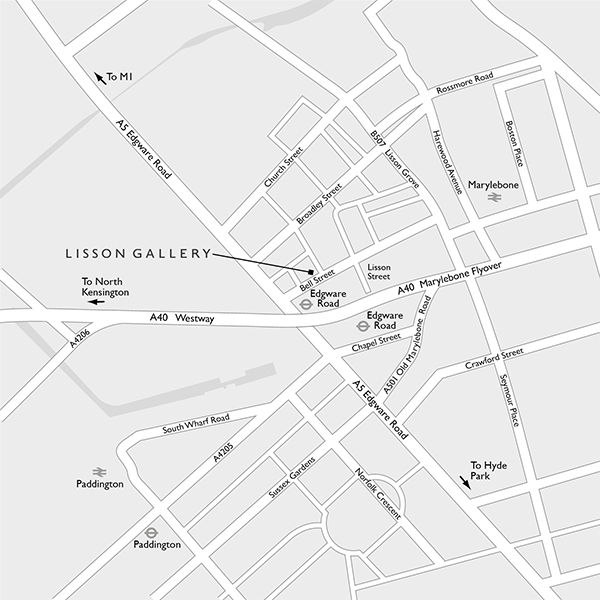A large new floor-based stone circle, Flint Wheel (2018) is at the centre of Richard Long’s latest exhibition in London, 'Circle to Circle, which is loosely themed around different uses of the circular motif across his practice. Constructed from knapped or split Norfolk flint, the stones radiate out from a central nexus like spokes on a wheel, alternating in tone between the chalky white exterior and each flint’s darker core. This geometric, starburst pattern refers back to previous works by Long, such as Paddy-Field Chaff Circle (2003), a temporary circle of radial lines made on Warli tribal land in the Maharastra district of India, while the sculpture’s material relates to a recent flint and slate circle, North South East West (2017) made for his major exhibition at Houghton Hall last year.
Read moreEchoing this will be a new River Avon crescent mud work, created by the artist directly onto the wall at the gallery. A round shape, this work will be bisected by a sweep of marks tracking Long’s gestural movements as he applies viscous mud to the surface with the resultant splashes and drips appearing below. A text work, titled From Circle to Circle From Space to Earth (2002) made after a continuous walk of 39 miles from a full moonrise to the sunrise, is also a poetic description of one night in the planet’s constant state of revolution.
Just as Long’s work obliquely references ancient symbols, beliefs and superstitions surrounding sacred sites and stone circles, it also reflects the occurrence of shapes and forms in nature, at both the macro- and the microscopic level. In a recent photographic work, Circle in the Amazon, Brazil (2016) Long arranged palm leaves into a circular mound, leaving only a gentle imprint in the chaotic fabric of the jungle.
Indeed the first iteration of the circumference in Long’s work harks back to his earliest days as an artist after leaving his first art school. In 1966 he made Turf Circle, in which Long convinced his neighbour in Bristol to allow him to cut and remove shallow triangular sections of soil before putting back the grass as a slightly lowered, circular bed. Another early sculptural circle, Stone Dance, appears in his first artist’s book with Lisson Gallery in 1971.
For Art Basel’s Unlimited section in June, Long will be installing a major work, Ivory Granite Line (2016), constructed from nine metres of granite stone, which follows up his presentation of a mud-panel triptych at the Armory fair in New York in March.















